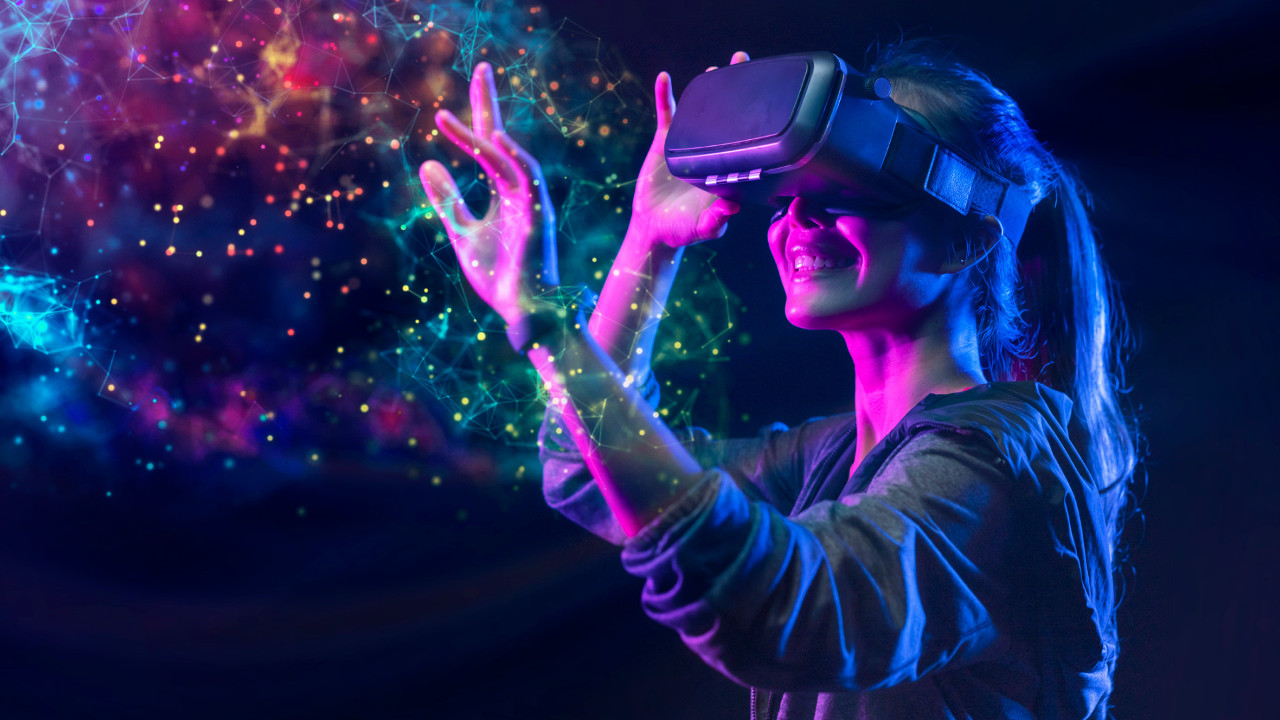Importance of Computer Systems
Computer systems have become an integral part of modern life, affecting nearly every aspect of our daily routines. They are indispensable tools in various fields such as education, healthcare, business, and entertainment. The versatility and power of computer systems enable us to perform complex tasks quickly and accurately, making them essential in our technologically driven society.
Evolution of Computer Systems
The journey of computer systems began in the mid-20th century and has since evolved through several generations. Early computers, like ENIAC, were massive machines requiring special rooms. Over the decades, advancements in technology have led to the development of more compact, powerful, and efficient systems. The evolution from mainframe computers to personal computers and now to smartphones illustrates the rapid pace of technological advancement and innovation in this field.
Relevance in Modern Society
In today’s world, computer systems are ubiquitous, from the simplest household devices to sophisticated systems used in scientific research and global communication networks. They play a pivotal role in driving innovation and efficiency across various industries, enhancing productivity, and enabling new forms of communication and entertainment. As technology continues to advance, the relevance and impact of computer systems in our daily lives are only expected to grow.
Fundamental Characteristics
- Speed: One of the defining characteristics of computer systems is their speed. Modern computers can process millions of instructions per second, significantly outperforming human capabilities. This speed allows for the execution of complex calculations, data processing, and real-time system management, which are crucial in fields like meteorology, aerospace, and financial modeling.
- Accuracy: Computers are renowned for their accuracy. When programmed correctly, they can perform tasks with a high degree of precision, minimizing errors. This accuracy is essential in applications where mistakes can have severe consequences, such as in medical diagnostics, engineering design, and financial transactions.
Automation
Automation is another key feature of computer systems. They can be programmed to perform repetitive tasks automatically without human intervention. This capability is widely used in manufacturing processes, administrative tasks, and data analysis, improving efficiency and reducing the risk of human error.
Storage Capacity
The storage capacity of computer systems has expanded exponentially over the years. Modern computers can store vast amounts of data, ranging from gigabytes to terabytes, and even petabytes in some cases. This capacity is critical for applications involving large datasets, such as databases, multimedia content, and scientific research.
Versatility
Versatility is a hallmark of computer systems. They can be programmed to perform a wide variety of tasks, from simple calculations to complex simulations. This adaptability makes them suitable for diverse applications, from gaming and graphic design to scientific research and business management.
Types of Computer Systems
Supercomputers
Supercomputers are the most powerful computers, designed for complex computations and data-intensive tasks. They are used in scientific research, weather forecasting, and cryptography. Supercomputers can process vast amounts of data at unprecedented speeds, making them indispensable for high-stakes applications.
Mainframe Computers
Mainframe computers are large, powerful systems used primarily by large organizations for bulk data processing and critical applications. They are known for their reliability, scalability, and ability to handle multiple simultaneous tasks. Mainframes are commonly used in industries such as banking, telecommunications, and government.
Minicomputers
Minicomputers, or mid-range computers, are smaller and less powerful than mainframes but more capable than personal computers. They are used in situations where moderate computing power is required, such as in small to medium-sized businesses for tasks like database management and transaction processing.
Microcomputers
Microcomputers, also known as personal computers (PCs), are the most common type of computer systems. They come in various forms, including desktops, laptops, tablets, and smartphones, each serving different user needs and preferences.
Desktops
Desktop computers are designed for use at a single location. They offer powerful performance, large storage capacities, and are easily upgradeable. Desktops are commonly used in offices, homes, and educational institutions.
Laptops
Laptops are portable computers that combine the functionality of desktops with the convenience of mobility. They are widely used by students, professionals, and travelers for their balance of performance and portability.
Tablets
Tablets are touch-screen devices that offer a compact and lightweight alternative to laptops. They are ideal for tasks like browsing the internet, reading, and media consumption, and are popular among casual users and professionals on the go.
Smartphones
Smartphones are handheld devices that combine the functions of a computer with mobile communication capabilities. They have become essential tools for communication, entertainment, and productivity, offering a wide range of applications and connectivity options.
Internal Components
Central Processing Unit (CPU)
- Functions
The Central Processing Unit (CPU) is often referred to as the brain of the computer. It performs all the calculations and processing tasks required by the system, executing instructions from programs and managing the flow of data.
- Types
CPUs come in various types and architectures, designed for different levels of performance. Common types include single-core, dual-core, quad-core, and multi-core processors, with multi-core CPUs offering better performance by handling multiple tasks simultaneously.
Memory (RAM and ROM)
- Importance
Memory is crucial for the performance of a computer system. It stores the data and instructions that the CPU needs to perform tasks. There are two main types of memory: RAM (Random Access Memory) and ROM (Read-Only Memory).
- Types
- RAM: Volatile memory used for temporary storage while the computer is running. It allows for quick access to data and improves the system’s speed and performance.
- ROM: Non-volatile memory that stores critical instructions for the computer’s startup process. It retains data even when the computer is turned off.
Storage Devices
Hard Disk Drives (HDD)
HDDs are traditional storage devices that use spinning disks to read and write data. They offer large storage capacities at a relatively low cost, making them ideal for storing vast amounts of data.
Solid State Drives (SSD)
SSDs use flash memory to store data, offering faster read and write speeds compared to HDDs. They are more durable and energy-efficient, though typically more expensive per gigabyte of storage.
Optical Discs
Optical discs, such as CDs, DVDs, and Blu-ray discs, use laser technology to read and write data. They are commonly used for media distribution and backup storage.
Flash Drives
Flash drives are portable storage devices that use flash memory. They are compact, durable, and offer varying storage capacities, making them ideal for transferring data between computers.
Motherboard
Components
The motherboard is the main circuit board of a computer, housing the CPU, memory, and other critical components. It includes slots for expansion cards, connectors for peripherals, and interfaces for storage devices.
Functionality
The motherboard facilitates communication between all the components of the computer system, ensuring they work together efficiently. It plays a critical role in the overall performance and upgradeability of the system.
Software Components
System Software
Operating Systems
Operating systems (OS) are the foundational software that manage hardware resources and provide a platform for applications. Popular operating systems include Windows, macOS, and Linux.
Utilities
Utility software helps maintain, optimize, and manage the computer system. Examples include antivirus programs, disk cleanup tools, and backup software.
Application Software
Office Suites
Office suites, such as Microsoft Office and Google Workspace, provide productivity tools for tasks like word processing, spreadsheet management, and presentations.
Media Players
Media players, such as VLC and Windows Media Player, allow users to play audio and video files. They support various formats and offer features like subtitle support and media library management.
Web Browsers
Web browsers, such as Google Chrome, Mozilla Firefox, and Safari, enable users to access and navigate the internet. They offer features like tabbed browsing, bookmarks, and extensions for enhanced functionality.
Operating Systems
Windows
Windows is one of the most widely used operating systems, known for its user-friendly interface and compatibility with a vast array of software and hardware. It is popular among both home and business users.
macOS
macOS is the operating system developed by Apple for its Macintosh computers. It is known for its sleek design, robust performance, and seamless integration with other Apple products.
Linux
Linux is an open-source operating system favored by developers, system administrators, and tech enthusiasts for its flexibility, security, and customization options. Various distributions, such as Ubuntu and Fedora, cater to different user needs.
Mobile Operating Systems
- iOS: iOS is Apple’s mobile operating system, used in iPhones and iPads. It is known for its smooth performance, security features, and extensive app ecosystem.
- Android: Android is a mobile operating system developed by Google. It is used in a wide range of devices from various manufacturers, offering customization options and a vast array of applications through the Google Play Store.
Peripheral Devices
Input Devices
Keyboard
Keyboards are essential input devices used for typing and entering commands. They come in various layouts and designs, including ergonomic and mechanical keyboards.
Mouse
The mouse is a pointing device used to interact with graphical user interfaces. It allows users to navigate, select, and manipulate objects on the screen with precision.
Scanner
Scanners convert physical documents and images into digital format, allowing for easy storage, editing, and sharing. They are commonly used in offices and by photographers.
Microphone
Microphones capture audio input, enabling voice communication, recording, and voice commands. They are used in applications like video conferencing, podcasting, and gaming.
Output Devices
Monitor
Monitors display visual output from the computer. They come in various sizes, resolutions, and technologies, such as LED and OLED, catering to different user needs.
Printer
Printers produce physical copies of digital documents and images. Types of printers include inkjet, laser, and 3D printers, each suited for specific tasks and industries.
Speakers
Speakers output audio from the computer, enhancing the multimedia experience. They range from built-in laptop speakers to high-fidelity external speaker systems.
Storage Devices
External HDD
External hard disk drives provide additional storage space and are used for backup and data transfer. They offer large capacities and are easily portable.
USB Flash Drive
USB flash drives are compact, portable storage devices that connect via USB ports. They are used for transferring files between computers and for temporary storage.
Networking and Connectivity
Wired Networks
Ethernet
Ethernet is a common wired networking technology used for local area networks (LANs). It offers reliable, high-speed data transfer and is widely used in offices and homes.
Wireless Networks
Wi-Fi
Wi-Fi allows devices to connect to a network wirelessly, providing flexibility and mobility. It is the standard for wireless local area networking, widely used in homes, businesses, and public spaces.
Bluetooth
Bluetooth is a wireless technology for short-range communication between devices. It is commonly used for connecting peripherals, such as keyboards, mice, and headphones, to computers and smartphones.
Security in Computer Systems
Importance of Cybersecurity
Cybersecurity is crucial in protecting computer systems from unauthorized access, data breaches, and cyber attacks. As our reliance on technology grows, so does the need for robust security measures to safeguard sensitive information.
Common Threats
Viruses
Viruses are malicious programs that replicate themselves and spread to other computers, causing damage and disrupting operations.
Malware
Malware encompasses various types of harmful software, including spyware, ransomware, and trojans, designed to steal data, damage systems, or extort money from users.
Phishing
Phishing involves fraudulent attempts to obtain sensitive information by disguising as a trustworthy entity, typically through email or instant messaging.
Security Measures
Firewalls
Firewalls act as barriers between trusted and untrusted networks, monitoring and controlling incoming and outgoing network traffic based on security rules.
Antivirus Software
Antivirus software detects and removes malicious software, protecting computers from viruses, malware, and other threats.
Encryption
Encryption converts data into a secure format that can only be read by authorized parties. It is essential for protecting sensitive information, such as financial transactions and personal data.
Maintenance and Upgrading
Regular Updates
Regular updates to software and hardware are crucial for maintaining the performance, security, and functionality of computer systems. Updates often include bug fixes, security patches, and new features.
Hardware Upgrades
- RAM: Upgrading RAM can significantly improve a computer’s performance, allowing it to handle more tasks simultaneously and run more demanding applications smoothly.
- Storage: Upgrading storage, such as switching from an HDD to an SSD, can enhance the speed and efficiency of a computer, reducing boot times and improving data access.
- GPU: Upgrading the graphics processing unit (GPU) can enhance the performance of graphics-intensive applications, such as gaming, video editing, and 3D modeling.
Software Upgrades
Keeping software up to date ensures access to the latest features, improvements, and security enhancements. This includes operating systems, applications, and utilities.
Future Trends in Computer Systems
Quantum Computing
Quantum computing represents a significant leap in computational power, utilizing quantum bits (qubits) to perform complex calculations at unprecedented speeds. This technology holds promise for solving problems that are currently intractable for classical computers.
Artificial Intelligence
Artificial intelligence (AI) is revolutionizing computer systems by enabling machines to learn, reason, and perform tasks autonomously. AI is being integrated into various applications, from virtual assistants to predictive analytics and autonomous vehicles.
Edge Computing
Edge computing brings data processing closer to the source of data generation, reducing latency and bandwidth usage. It is particularly beneficial for real-time applications, such as IoT devices and autonomous systems.
Internet of Things (IoT)
The Internet of Things (IoT) connects everyday objects to the internet, enabling them to collect and exchange data. This interconnected network of devices is transforming industries and daily life by enhancing automation, monitoring, and control.
Conclusion
Summary of Key Points
Computer systems are characterized by their speed, accuracy, automation, storage capacity, and versatility. They come in various forms, including supercomputers, mainframes, minicomputers, and microcomputers, each serving different purposes and user needs. The internal and software components, such as the CPU, memory, storage devices, operating systems, and application software, work together to provide a functional and efficient system.
Future Outlook
As technology continues to evolve, computer systems are expected to become even more powerful, efficient, and integrated into our daily lives. Innovations such as quantum computing, artificial intelligence, edge computing, and IoT will drive the next wave of advancements, shaping the future of computing and its impact on society.





